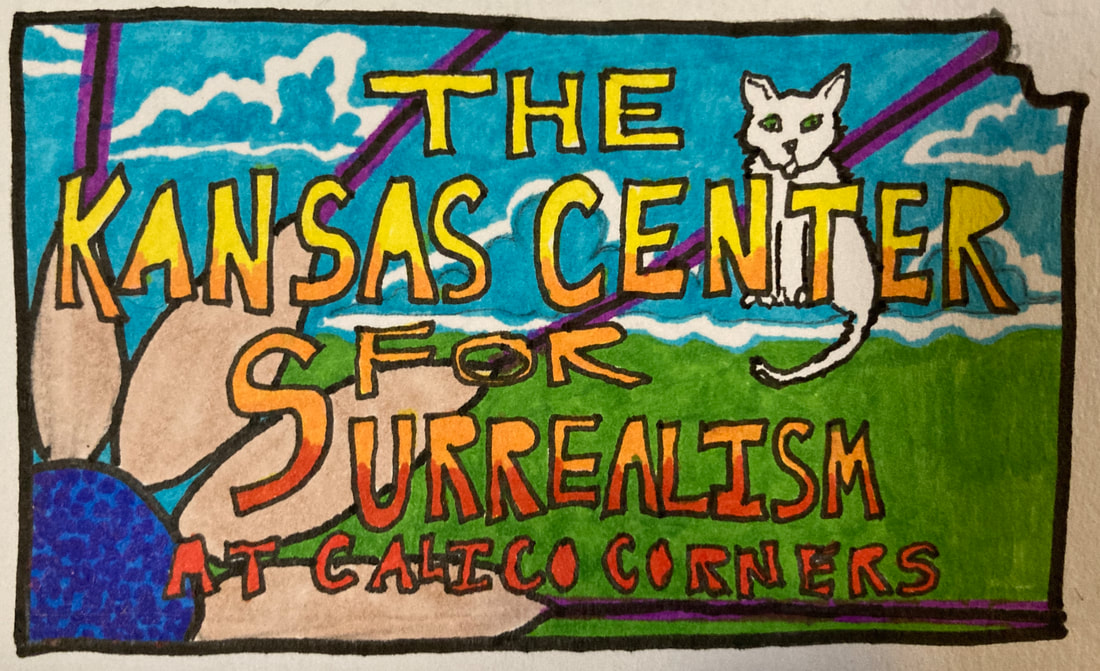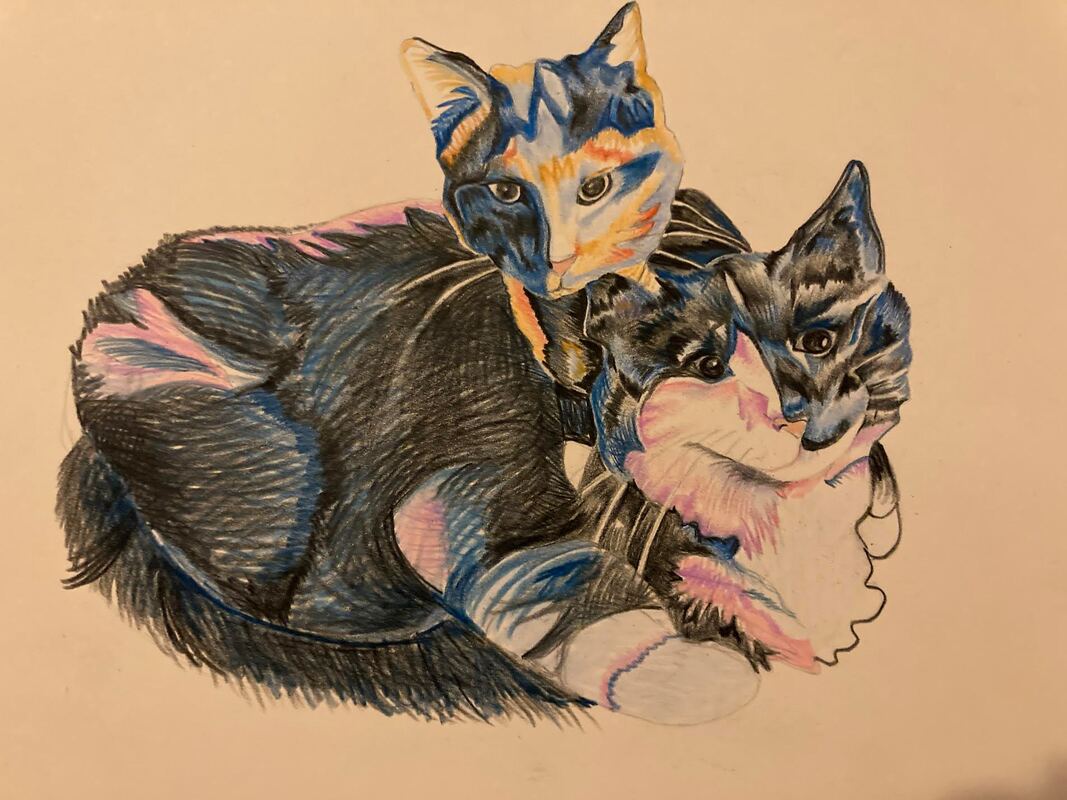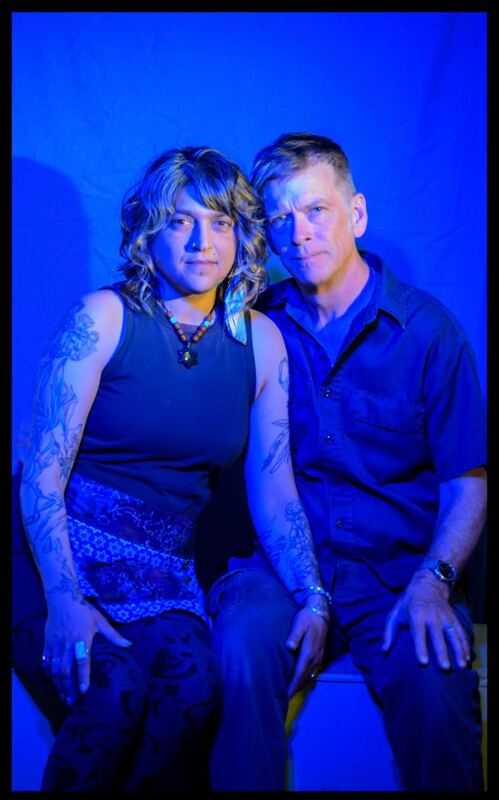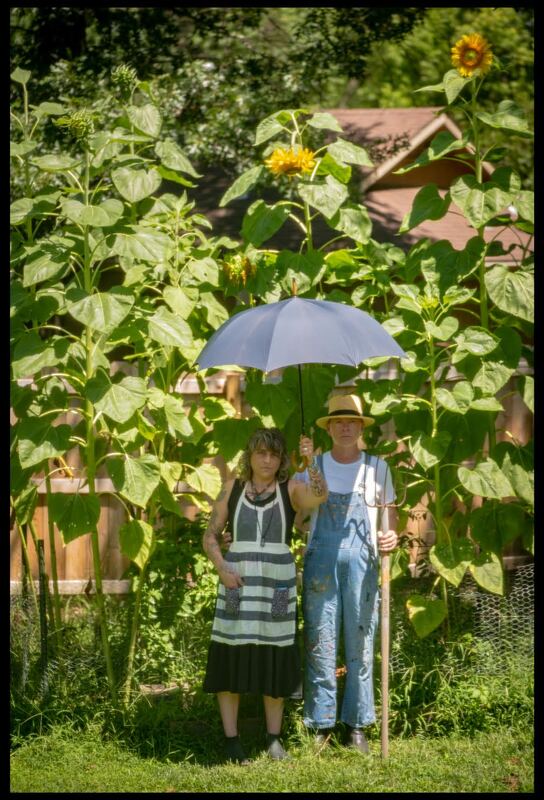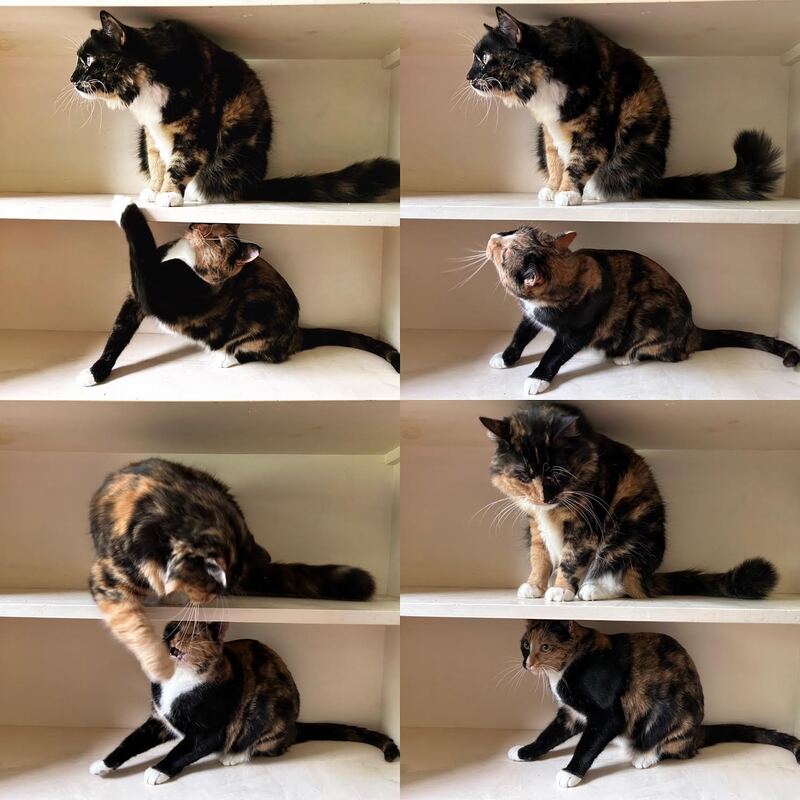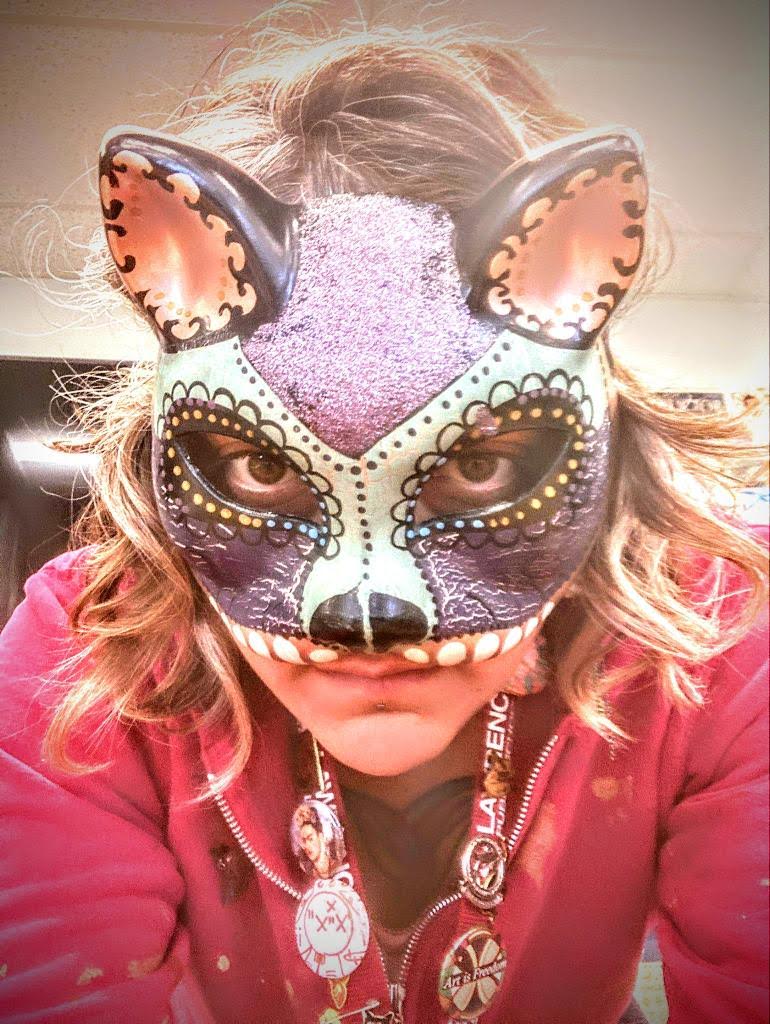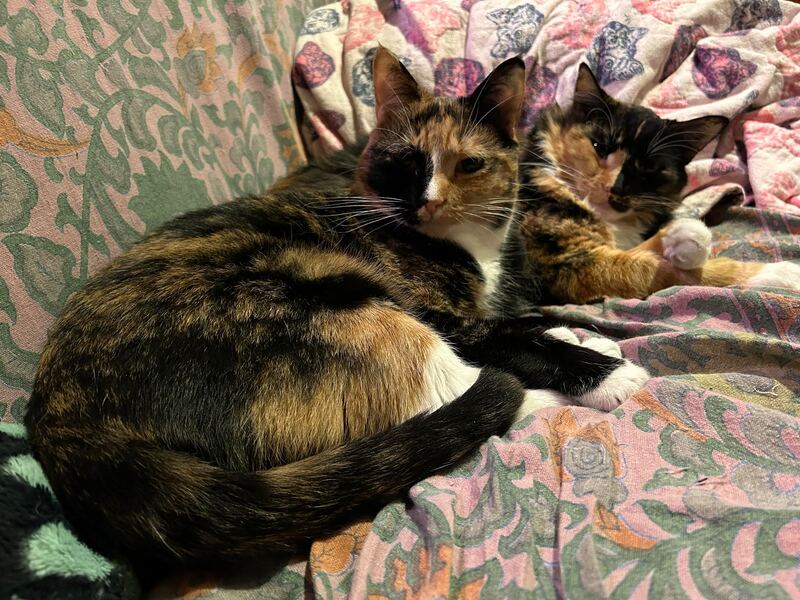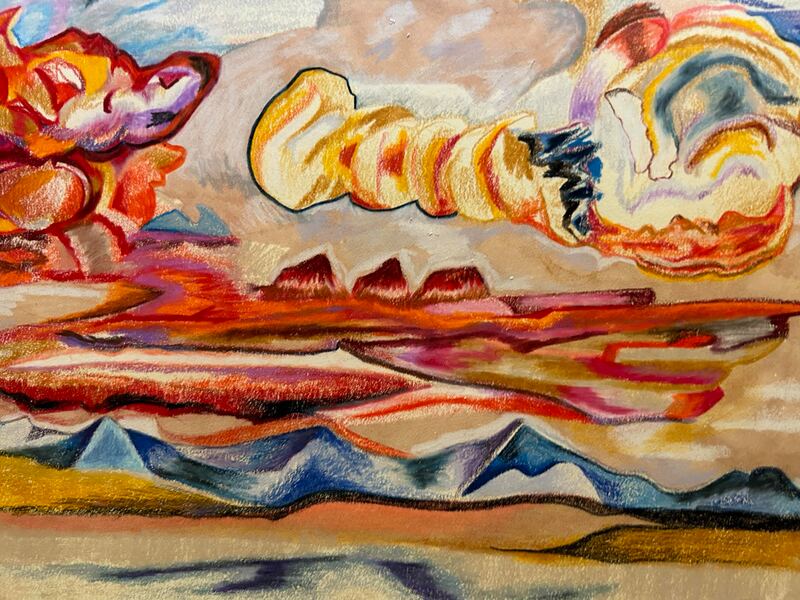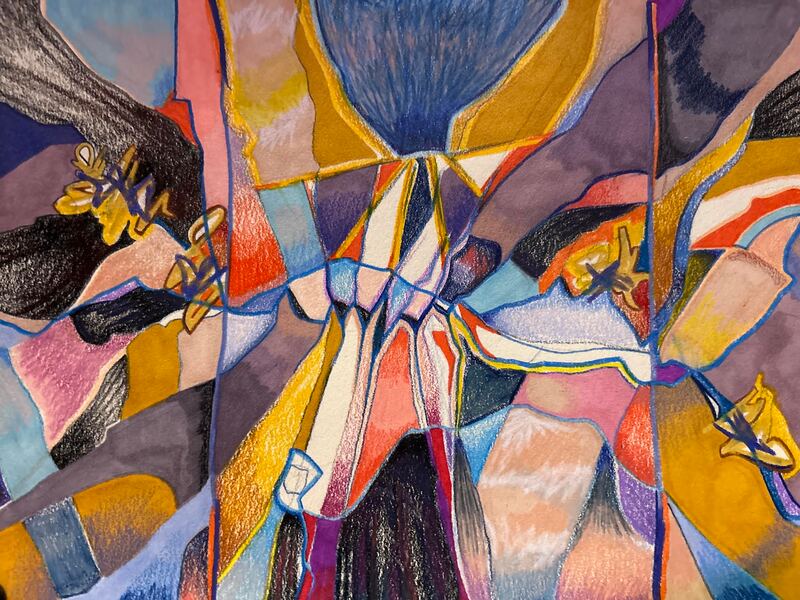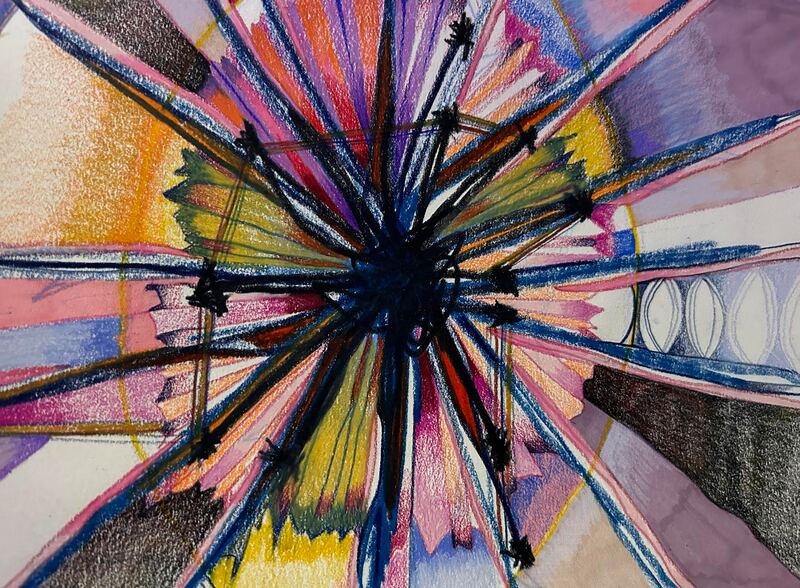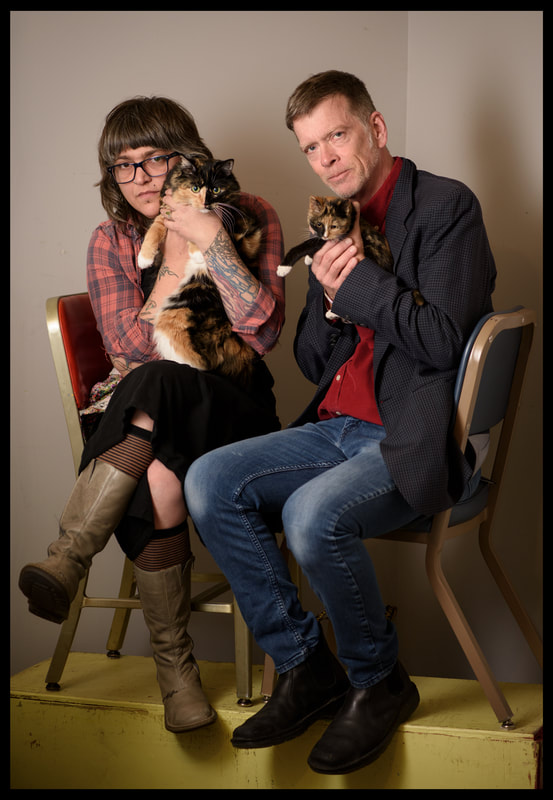Scroll down to learn more about Mrs. Downs Doubrava!
Pictured above is my family. My husband, Michael, and my daughters, Matilda, and Gwendolyn. Michael is a photographer, you can peruse his artwork here.
Mrs. Downs-Doubrava. MFA, MVAE
Department Chair Visual Art
NHS Adviser
Art Club Co-Sponsor
Other roles:
Director of the Lawrence Jewish Community Congregation Religious School
Co-founder of Dear Me,
CONTACT
rdowns@usd497.org (school email)
rachelcat81@gmail.com (alternate email)
blanknessisbrutal.com (class content website)
Instagram: blanknessisbrutal (class content)
Collaborative Project with Bailey Kivett: Dear Me,
dearmeyouareok.weebly.com
dearmeyouareok@gmail.com
Instagram: dear_me_you_are_ok
Hello All,
My name is Rachel M. Downs-Doubrava. I teach drawing and painting at Free State High School. I have been a proud Firebird for 12 years.
I have been creating art for as long as I can remember. When I was nine I drew all of my imaginary friends to scale...about two inches tall. There were at least five of these delicate and figurative drawings. They all had famous dead artist names, like Matisse, Pablo, Miró, etc. Education runs very rich in my family. My parents have encouraged and supported me throughout my entire learning process. My mother was a teacher for over 30 years and my father has also spent time in education. They have been crucial resources for me as a student. I believe in education. I graduated with a Bachelor of Arts in painting at Wichita State University. I then went on to graduate school at New Mexico State University where I earned a Master of Fine Arts in Painting and Drawing. During my graduate program I was a graduate assistant wherein I taught two painting classes a semester. After I graduated there I continued teaching at NMSU as an adjunct instructor. My family brought me back to Kansas a few years later and I ended up in Emporia teaching full time at Emporia State University. I decided quickly that I yearned to be in a traditional public school classroom, I missed high school. I attended the University of Kansas and studied education. In 2016 I received a Master of Education in the Visual Arts. Teaching + Art is my passion. I am honored to be a part of student processes. I appreciate voice and safety in the studio.
rdowns@usd497.org (school email)
rachelcat81@gmail.com (alternate email)
blanknessisbrutal.com (class content website)
Instagram: blanknessisbrutal (class content)
Collaborative Project with Bailey Kivett: Dear Me,
dearmeyouareok.weebly.com
dearmeyouareok@gmail.com
Instagram: dear_me_you_are_ok
Hello All,
My name is Rachel M. Downs-Doubrava. I teach drawing and painting at Free State High School. I have been a proud Firebird for 12 years.
I have been creating art for as long as I can remember. When I was nine I drew all of my imaginary friends to scale...about two inches tall. There were at least five of these delicate and figurative drawings. They all had famous dead artist names, like Matisse, Pablo, Miró, etc. Education runs very rich in my family. My parents have encouraged and supported me throughout my entire learning process. My mother was a teacher for over 30 years and my father has also spent time in education. They have been crucial resources for me as a student. I believe in education. I graduated with a Bachelor of Arts in painting at Wichita State University. I then went on to graduate school at New Mexico State University where I earned a Master of Fine Arts in Painting and Drawing. During my graduate program I was a graduate assistant wherein I taught two painting classes a semester. After I graduated there I continued teaching at NMSU as an adjunct instructor. My family brought me back to Kansas a few years later and I ended up in Emporia teaching full time at Emporia State University. I decided quickly that I yearned to be in a traditional public school classroom, I missed high school. I attended the University of Kansas and studied education. In 2016 I received a Master of Education in the Visual Arts. Teaching + Art is my passion. I am honored to be a part of student processes. I appreciate voice and safety in the studio.
